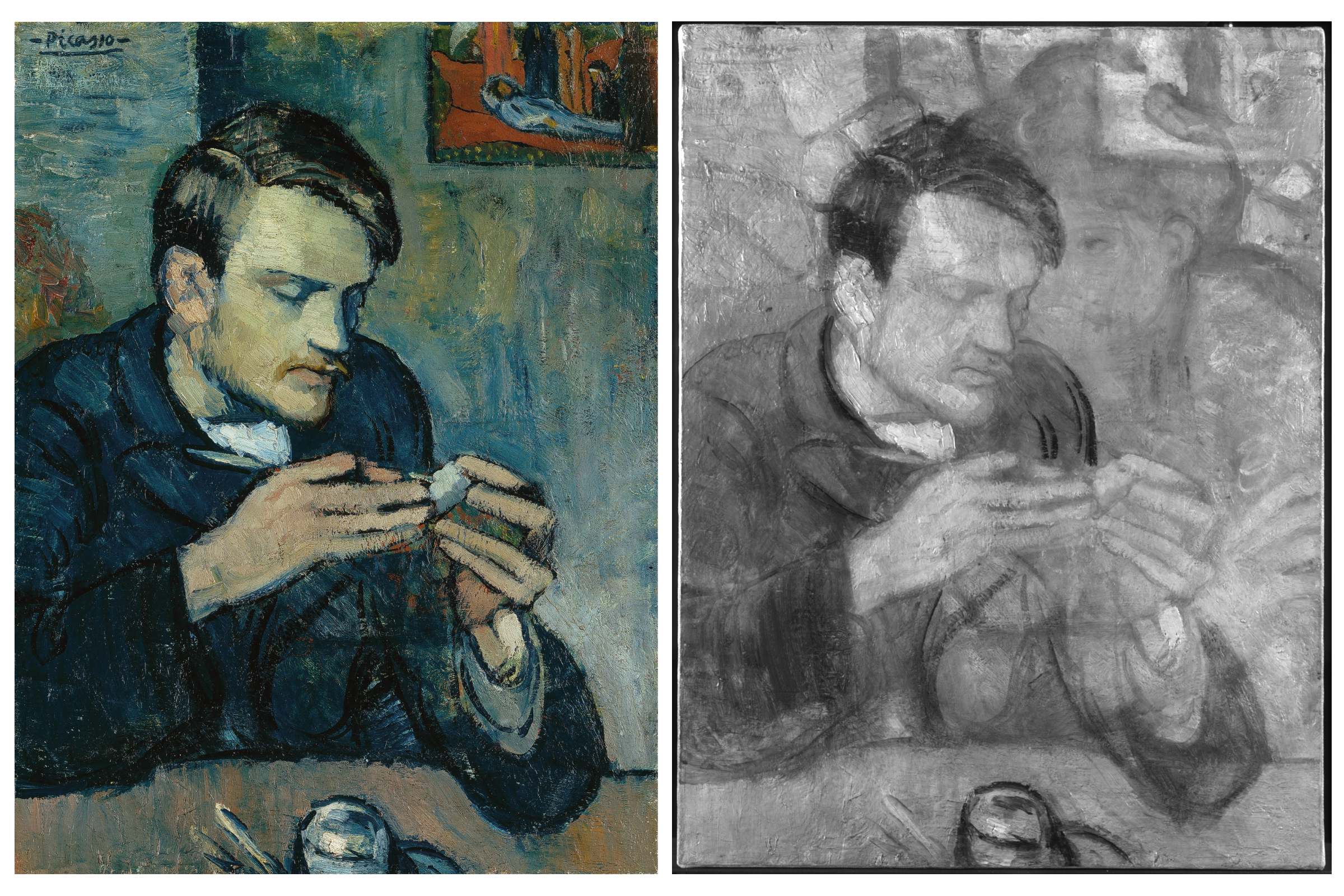An iconic portrait from Pablo Picasso’s blue period gained a new layer of complexity after the Courtauld Institute of Art in London discovered an earlier image of a woman beneath it that went undetected for over a century.
The hidden depiction of the mystery woman was revealed in the upper right corner of Picasso’s “Portrait of Mateu Fernández de Soto” (1901) after the work underwent X-ray and infrared imaging ahead of The Courtland’s exhibition Goya to Impressionism, opening this Friday. The final painting portrays Spanish sculptor Mateu Fernández de Soto seated in Picasso’s studio, carving an object in his hands. A painting of the open casket of Picasso’s close friend, artist Carles Casagemas, is seen in the background. Casagemas’s death by suicide is said to have inspired Picasso’s blue period, lasting from 1901 to 1904.
“Portrait of Mateu Fernández de Soto” is among the first works embodying the artist’s somber shift from Impressionism on account of experiencing both poverty and loss early into his career as he was struggling to survive as an artist in Paris, often painting on bits of cardboard instead of canvas, painting over his old work, and even burning his artwork to keep his apartment warm.
Little is known about the identity or context of the concealed woman as further imaging and research are still being conducted, but conservators observed that she sports a chignon hair bun (en vogue in Paris at the time). She is seated, leaning on her elbows with her shoulders rolled forward and one of her hands clasping her upper arm.
Consistent with Picasso’s habit of reuse, the woman’s portrait discovery comes after a small, floppy-eared dog was found to have been concealed in the foreground of Picasso’s “Le Moulin de la Galette” (1900) in 2023, and after a portrait of a man was found beneath “The Blue Room” (1901) in 2014.
The researchers found evidence of another head represented in the lower half of the composition beneath de Soto, but it’s unclear if it is related to the image of the woman.
“Picasso’s way of working to transform one image into another and to be a stylistic shapeshifter would become a defining feature of his art, which helped to make him one of the giant figures of art history,” said Barnaby Wright, deputy head of the Courtauld Gallery, in a press statement. “All that begins with a painting like this.”

